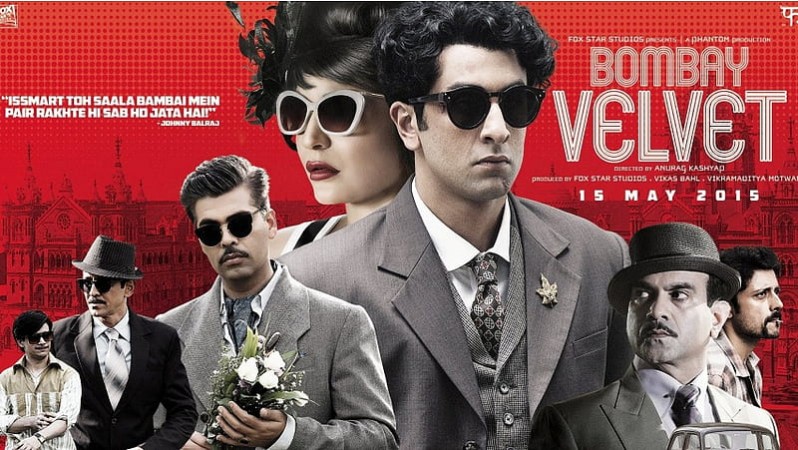
Ambitious projects frequently come to life in the minds of visionary filmmakers in the constantly changing world of Indian cinema. Bombay Velvet, a planned trilogy, was one such endeavour that created a great deal of buzz and anticipation. It was first imagined as a massive cinematic epic covering Mumbai's first three decades when it was first conceived in 2009. From its inception as a trilogy to its ultimate transformation under the direction of director Anurag Kashyap, this article examines the intriguing journey of Bombay Velvet.
The idea for Bombay Velvet as a trilogy was nothing less than a movie fantasy. Danny Boyle, an Academy Award-winning director known for his outstanding work in films like "Slumdog Millionaire" and "Trainspotting," was the driving force behind this ambitious project. Boyle developed the idea for a trilogy to depict the essence of Mumbai's development from the 1960s to the 1980s as a result of his fascination with the city's colourful and turbulent history.
The 1960s were the intended setting for the first book in the Bombay Velvet trilogy, which would also have charismatic John Abraham as the lead character. Later, Ranbir Kapoor would take on the role, giving it his own distinct charm and acting prowess. The goal of this episode was to take viewers back to a time of jazz clubs, gangsters, and political unrest while creating a vivid picture of the city at that time.
The 1970s, a decade marked by cultural changes and political upheaval, would be explored in the second book of the trilogy. The legendary Aamir Khan was chosen as the leading man to bring this chapter to life. This installment was anticipated to precisely depict the changes that occurred during the 1970s in Mumbai, which were marked by the rise of the criminal underworld and the transformation of the city's landscape.
The grand finale of the Bombay Velvet trilogy took place in Mumbai during the turbulent 1980s, a time of significant sociopolitical change. The lead role in this film was given to Shah Rukh Khan, who is renowned for his charismatic screen presence and versatility. This episode showcased the city's development into a bustling metropolis and served as the trilogy's dramatic and suspenseful conclusion.
Despite the Bombay Velvet trilogy's potential as a masterpiece of cinema, destiny had other ideas. An important turning point in the development of the project was Danny Boyle's early departure from it. The trilogy's future is uncertain as a result of Boyle's departure, which was reportedly caused by creative disagreements and scheduling issues.
Anurag Kashyap, an Indian director, was given sole responsibility for bringing Bombay Velvet's vision to life after Danny Boyle stepped down as director. Kashyap was given the task of reshaping the project to suit his own sensibilities while preserving the core of the original concept. Kashyap is renowned for his unconventional storytelling and gritty narratives.
Bombay Velvet underwent a significant transformation under the direction of Anurag Kashyap. Kashyap made the choice to concentrate on a single film set in the 1960s rather than sticking to the original planned trilogy structure. With this shift in focus, he was able to keep the core of his original vision while delving deeper into the complexities of the time.
The story of Bombay Velvet was improved to only focus on the 1960s with Ranbir Kapoor firmly established in the lead role. The movie's plot centred on the ascent of street fighter Johnny Balraj (Kapoor), who became involved with Rosie Noronha (Anushka Sharma), in the course of the plot. The movie delved into Mumbai's seedy underbelly, its jazz clubs, and the ruthless individuals who decided the city's future.
Bombay Velvet struggled at the box office after its 2015 release and received mixed reviews from critics. The film's pacing and narrative complexity were criticised by some viewers while others praised its visual appeal and sense of timelessness. The production team suffered financial losses because the movie was unable to recoup its significant production costs.
Under the direction of Anurag Kashyap, the ambitious Bombay Velvet trilogy, which was conceived in 2009 as a grand cinematic journey through three decades of Mumbai's history, underwent a significant transformation. Although Danny Boyle's original vision was compelling, it was not meant to be fully realised.
The Bombay Velvet that eventually appeared on screens in 2015 may not have met the extremely high expectations, but it is still proof of how filmmaking is constantly changing. The movie, which takes place in Mumbai in the 1960s, offers an engrossing look into a time when there was crime, passion, and ambition.
Bombay Velvet's transformation from a trilogy to a single movie serves as a reminder that even the most ambitious filmmaking visions can change and adapt to the realities of the business. Bombay Velvet's legacy endures as a testament to the tenacity and creativity of filmmakers in the constantly evolving field of cinema, even though the trilogy may never be completed.
How Sri Lanka Became the Canvas for 'Bombay Velvet'